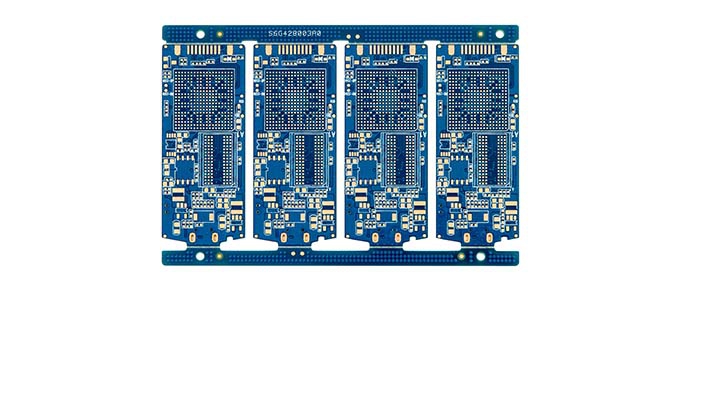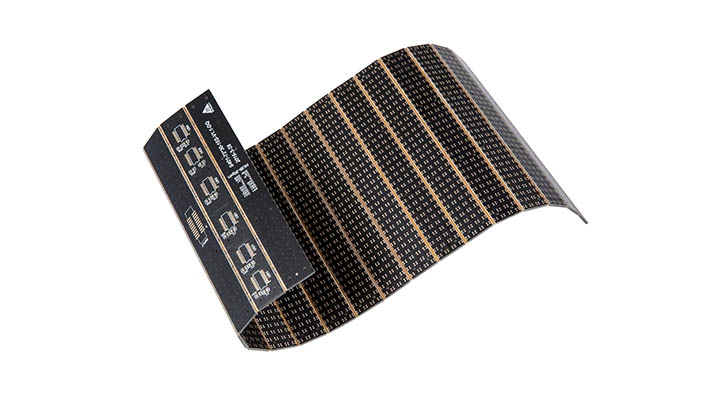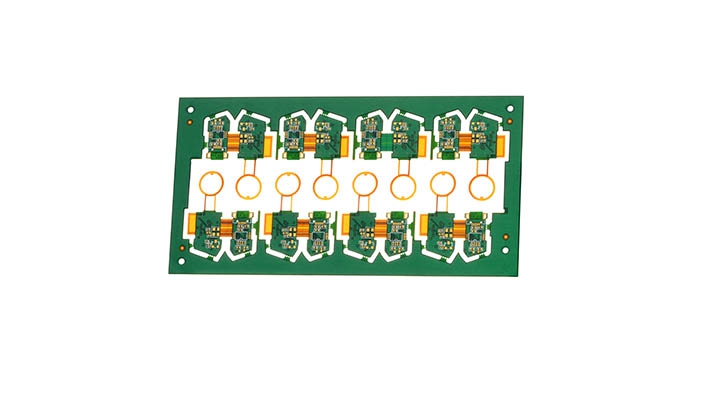Consumer Electronics PCBs
| PCB Category | Multilayers | LED | High Frequency | Aluminum | Thick Copper | High Tg | HDI | Flexibile | Rigid-Flex |
| Consumer Electronics | x | x | x | x | x | x |
Aluminum PCB also named as metal clad (MCPCB) PCB, insulated metal substrate (IMS or IMPCB) PCB, thermally conductive PCBs, etc. It is generally including single layer, double layer and multi-layer. Aluminum PCBs is the most common type - the base material consists of aluminum core with standard FR4. Aluminum PCBs is regarded as the solution to high power and tight tolerance applications.
• Environmentally Friendly: Aluminum is non-toxic and recyclable. Manufacturing with aluminum is also conducive to conserving energy due to its ease of assembly.
• Heat dissipation: High temperatures can cause severe damage to electronics; Aluminum can actually transfer heat away from vital components, thus minimizing the harmful effect it could have on the circuit board.
• Higher durability: Aluminum provides strength and durability to a product that ceramic or fiberglass bases cannot.
• Lightweight: Aluminum is a surprisingly lightweight metal. Aluminum adds strength and resilience without adding on any additional weight.
Check Eashub's capability on Aluminum PCB for Consumer Eletronics at below table:
| Feature | Capability |
| Quality Grade | Standard IPC 2 |
| Number of Layers | 4 - 24layers |
| Material | Aluminum core (Domestic 1060), Copper core, FR4 covering |
| Max Board Size | Max 450mm x 600mm |
| Final Board Thickness | 0.4mm - 5.0mm |
| Copper Thickness | 0.5oz - 10.0oz |
| Min Tracing/Spacing | 4mil/4mil |
| Min Drilling Hole Diameter | 6mil |
| Solder Mask Color | Green, Red, Yellow, Blue, White, Black, Purple, Matte Black, Matte green |
| Silkscreen Color | White, Black |
| Surface Treatment | Immersion gold, OSP, Hard Gold, Immersion Sliver, Enepig |
| Testing | Fly Probe Testing (Free) and A.O.I. testing |
| Impedance tolerance | ±10% |
| Lead Time | 2 - 28days |
Request for Aluminum PCB Quote
LED PCB The LED is soldered to the circuit board and features a chip that produces the light when electrically connected. A thermal heat sink and a ceramic base are used to bond the chip. LED will generate more heat compared with other electronic parts, which required the PCB to have a better ability for dissipating heat. For these special requirements, metal core PCB are frequently used on LED PCB, especially aluminum core PCB. This is because the aluminum PCB typically includes a thin layer of thermally conductive dielectric material that can transfer and dissipate the heat with much greater efficiency than a traditional rigid PCB..Light In Weight
.No Dimension Limitation
.Low Power Consumption
.Strong Heat Dissipation Performance
.Dust and Moisture resistant
HDI (High density interconnect) PCB defined as a printed circuit board with a higher wiring density per unit area than traditional PCB. HDI includes the use of fine features or signal traces and spaces of 0.003” (75 µm) or less and laser-drilled blind or buried microvia technology. Using HDI technology is a significant increase in packaging density. The space obtained by finer track structures is available for components. Besides, overall space requirements are reduced will result in smaller board sizes and fewer layers. Usually FPGA or BGA are available with 1mm or less spacing. HDI technology makes routing and connection easy, especially when routing between pins. Below functions can be improved significant by HDI PCB:
• Easier to place SMD components and more component space
• Faster routing
• More stable power
• Reduce interference inductance and capacitance effects
• Improve signal integrity in high-speed design
Check Eashub’s capability on HDI PCB for Consumer Eletronics at below table:
| Feature | Capability |
| Quality Grade | Standard IPC 2, IPC 3 |
| Number of Layers | 4 - 30layers |
| Material | FR4 standard Tg 140°C,FR4 High Tg 170°C, FR4 and Rogers combined lamination, special materials |
| Max Board Size | Max 450mm x 600mm |
| Final Board Thickness | 0.4mm - 6.0mm |
| Copper Thickness | 0.5oz - 13oz |
| Min Tracing/Spacing | 2mil/2mil |
| Min Hole Diameter - Mechanical | 4mil |
| Min Hole Diameter - Laser | 3mil |
| Solder Mask Color | Green, Red, Yellow, Blue, White, Black, Purple, Matte Black, Matte green |
| Silkscreen Color | White, Black, Yellow, Blue |
| Surface Treatment | Immersion gold, OSP, Hard gold, Immersion Silver |
| Impedance control | ±10% |
| Lead Time | 2 - 28days |
• Saving Space and weight.
• Improve Reliability with fewer interconnects
• Enhanced Capabilities by compatible with variant connectors or components
• Save cost by reduce material and package.
Check Eashub's capability on Flexible PCB for Consumer Eletronics at below table:
| Feature | Capability |
| Quality Grade | Standard IPC 2 |
| Number of Layers | 1 - 8layers |
| Material | DuPont or Local Polyimide |
| Max Board Size | Max 400mm x 610mm |
| Final Board Thickness | 0.08mm - 0.8mm |
| Copper Thickness | 0.5oz - 2.0oz |
| Min Tracing/Spacing | 2mil/2mil |
| Min Drilling Hole Diameter | 8mil |
| Solder Mask Color | Green, Red, Yellow, Blue, White, Black, Purple, Matte Black, Matte green |
| Silkscreen Color | White, Black |
| Surface Treatment | Immersion gold, OSP, Immersion Silver, Immersion Tin |
| Tolerance of dimension | ±0.05mm |
| Lead Time | 2 - 28days |
Request for Flexible PCB Quote
Rigid-flex PCB circuit is a hybrid construction flex circuit combining rigid and flexible substrates which are laminated together under a single structure. Each layer of rigid-flex circuit are electrically interconnected by plated through holes (PTH), which is different from a flexible circuit with FR4/PI stiffener on top or bottom of flex circuit only by the means of preventive or thermal sensitive adhesive only, no PTH. Rigid-flex board own the advantages both rigid FR4 PCBs and flexible PCBs. In rigid area, components will be soldered on, and whole board can be bendable at the flexible circuit area. as these boards are designed in a 3D space, which also offers greater spatial efficiency. Benefits of Rigid-Flex PCBs are below:
• Save space and weight by applying 3D and remove connectors
• Assure higher reliability with fewer solder joints
• Simplified assembly and test processes.
• Provide simple modular interfaces to the system environment.
• Adapt to more complexity of mechanical designs
Check Eashub’s capability on Rigid-Flex PCB for Consumer Eletronics as below table:
| Feature | Capability |
| Quality Grade | Standard IPC 2 |
| Number of Layers | 2 - 24layers |
| Material | FR4/PTFE/R-F |
| Max Board Size | Max 450mm x 540mm |
| Final Board Thickness | 0.25mm - 5.0mm |
| Copper Thickness | 0.5oz - 2.0oz |
| Min Tracing/Spacing | 3mil/3mil |
| Min Hole Diameter - Mechanical | 6mil |
| Min Hole Diameter - laser | 3mil |
| Solder Mask Color | Green, Red, Yellow, Blue, White, Black, Purple, Matte Black, Matte green |
| Silkscreen Color | White, Black, Yellow |
| Surface Treatment | HASL, Hard Gold Finger, OSP, Immersion Gold, Immersion Tin, Immersion Sliver |
| Impedance control | ±10% |
| Lead Time | 2 - 28days |
Request for Rigid -Flex PCB Quot









